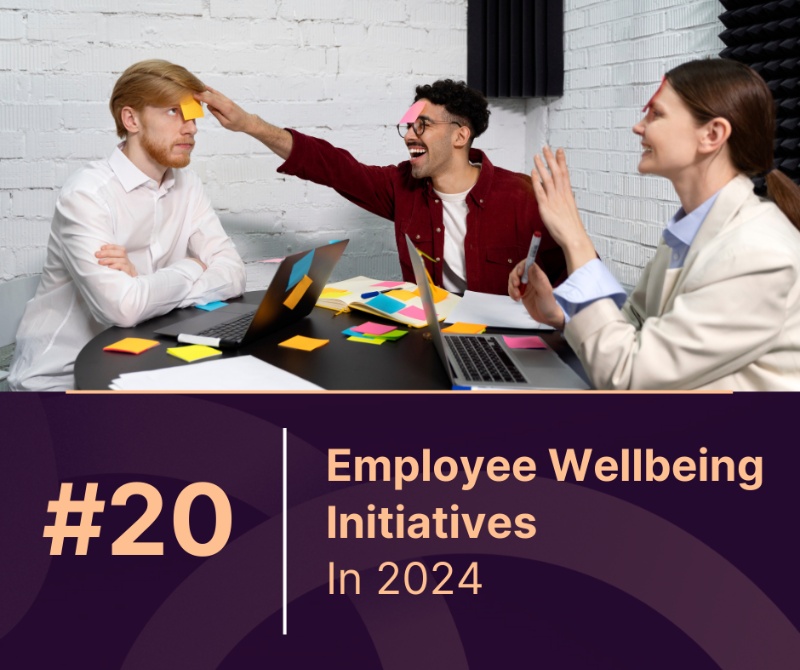In today’s rapidly evolving workplace, employee engagement is more important than ever. Not only are engaged workers more efficient, but they are also more devoted and driven. Nonetheless, a lot of businesses find it difficult to maintain staff engagement, which has a negative impact on productivity and high turnover rates.
The Challenge of Low Employee Engagement
One of the most common problems that many firms deal with is low employee engagement. Many businesses discover that their staff members are disengaged, unmotivated, and unconnected from their work despite their best efforts. This disengagement may result in lower output, greater absenteeism, and eventually higher turnover rates.
Take the example of the mid-sized IT corporation XYZ Corporation. They noticed a concerning trend: employee happiness and engagement numbers were progressively dropping, despite providing competitive salary and perks. Employee engagement and excitement suffered as a result of their disconnection from the company’s goal and vision. Due to this disengagement, there was a discernible decline in overall productivity, missed deadlines, and decreased creativity.
The Impact of Ripples on Organizational Achievement
Poor employee engagement has a cascading impact that can destabilize the entire organization, not just individual performance. Disengaged workers are less likely to go above and above, work well in teams, or remain dedicated to their jobs. This may lead to a poisonous workplace, weaken team dynamics, and ultimately make it more difficult for the business to accomplish its objectives.
The Consequences of Low Employee Engagement
Decreased Productivity: Disengaged employees are less efficient and produce lower-quality work.
Higher Turnover Rates: Employees who feel unmotivated and unappreciated are more likely to leave, leading to increased recruitment and training costs.
Poor Team Dynamics: Lack of engagement can lead to poor communication, conflicts, and a breakdown in teamwork.
Stagnant Innovation: Disengaged employees are less likely to contribute new ideas, stifling creativity and innovation within the organization.
Negative Workplace Culture: Low engagement levels can create a negative atmosphere, affecting morale and overall job satisfaction.
Top Strategies for Improving Employee Engagement in 2024
In order to tackle the widespread problem of low employee engagement and its wider consequences, companies need to implement proactive and inventive approaches. In 2024, the following are some of the most effective methods for raising employee engagement:
- Foster Open Communication and Transparency
Encouraging and valuing open communication in the workplace is essential for fostering employee engagement. Update staff members on company objectives, challenges, and updates on a regular basis. Encourage employee feedback and ensure they feel appreciated and heard. In order to promote an atmosphere of trust and openness, leaders should be personable and approachable.
- Provide Opportunities for Professional Development
Engagement requires spending on the training and development of employees. Provide workshops, training courses, and chances to grow in your job. Employees are more likely to be engaged and motivated when they believe that their contributions and abilities are acknowledged and that they have a clear path for advancement.
- Recognize and Reward Achievements
Rewarding and praising staff members for their efforts and contributions can greatly increase engagement. Put into effect recognition initiatives that honor both individual and group accomplishments. This can be accomplished through thank-you notes, official rewards, or shout-outs during meetings. Acknowledgment creates a happy work atmosphere and inspires workers to keep giving their best work.
- Promote Work-Life Balance
Promoting a positive work-life balance is essential for the wellbeing and engagement of employees. Provide a range of flexible work arrangements, including reduced workweeks, flexible hours, and remote work choices. Stress the value of taking pauses and making most of your vacation time. Employees that operate in an environment that values leisure and opposes excessive work are more motivated and effective.
- Cultivate a Positive Workplace Culture
Encouraging employee engagement requires a positive work environment. Establish a welcoming environment where staff members feel valued and respected. Encourage inclusivity, cooperation, and teamwork. To improve team cohesion and strengthen relationships, promote social engagements and team-building exercises.
- Empower Employees with Autonomy
Allowing workers to take responsibility for their work and make decisions for themselves can greatly increase employee engagement. Give workers the freedom to oversee their assignments and projects and the tools and assistance they require to be successful. Motivated, creative, and dedicated workers are more likely to be empowered in their positions.
How Salesforce Improved Employee Engagement
Salesforce, a leading provider of customer relationship management (CRM) software worldwide, has effectively employed various tactics to augment employee engagement. Salesforce has established a vibrant and encouraging work environment that puts employee well-being first because it understands the importance of engagement on output and overall success.
Salesforce’s Engagement Strategies
Ohana Culture: Salesforce fosters an inclusive, transparent, and trusting environment known as “Ohana,” which is similar to a family. This culture makes sure that workers feel appreciated and supported and helps them to feel like they belong.
V2MOM Framework: Salesforce aligns staff members with the organization’s objectives through the use of the V2MOM framework (Vision, Values, Methods, Obstacles, and Measures). By promoting open dialogue and transparency, this framework makes sure that everyone is in agreement.
Continuous Learning: Salesforce provides a number of options for professional growth, such as workshops, certifications, and training courses. Workers are urged to keep improving their knowledge and abilities.
Recognition Programs:Salesforce has instituted appreciation initiatives to honor staff members’ accomplishments. The organization consistently recognizes the efforts of both individuals and teams, which promotes a happy and inspiring work atmosphere.
Flexible Work Arrangements: Salesforce offers flexible work schedules that enable staff members to successfully manage their personal and professional life. This flexibility has been especially helpful in helping people manage work-life integration during the COVID-19 epidemic.
Wellness Initiatives: Salesforce offers a range of wellness initiatives, such as mindfulness workshops, exercise classes, and health exams, to support the wellbeing of its employees. These programs lessen stress and improve contentment at work in general.
A Call to Action
Engagement of employees is essential to the success of a firm. Companies may create an atmosphere where people thrive by encouraging open communication, offering chances for professional development, recognizing accomplishments, encouraging work-life balance, developing a pleasant workplace culture, and giving employees a certain amount of autonomy.
A proactive approach to employee engagement can result in a team that is more devoted, driven, and productive. Let’s make a commitment to putting these tactics into practice as we approach 2024 in order to raise employee engagement and promote corporate success. Never forget that happy workers are essential to a flourishing business.



